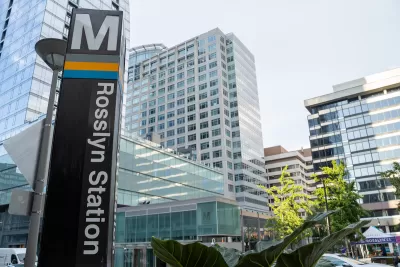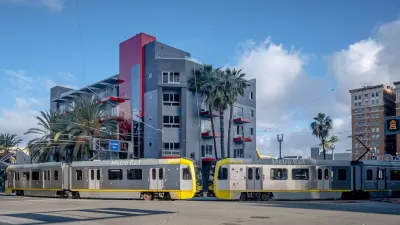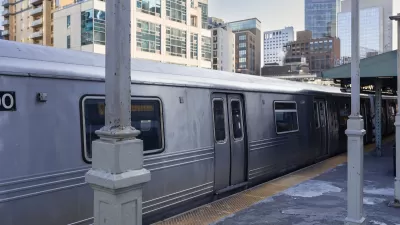Converting underutilized parking lots to housing could make transit more accessible and housing more affordable.

In an opinion piece in Greater Greater Washington, Sogand Karbalaieali calls on the Washington Metropolitan Area Transit Authority (WMATA) to meet the twin goals of boosting ridership and generating revenue to cover its massive budget shortfall by considering other options for its underutilized parking lots, which had an occupancy rate of 55 percent in 2019.
More recently, “As people opted to live and work near metro stations, the demand for parking declined. In most Maryland and Virginia stations, parking usage plummeted to as low as 20% in recent years, driven by remote work amid the pandemic.” This leaves Metro with a valuable real estate asset, Karbalaieali argues. “Why not find a better use for this wasted space?”
Joint development projects that Metro engages in already bring in $194 million in annual state and local tax revenue and $10 million in lease revenue, the article notes. “In its strategic plan, Metro anticipates that new joint developments will add 9 million metro trips annually, which would increase metro fare revenue by $40 million.” These transit-oriented developments (TOD) could
According to Karbalaieali, zoning obstacles, parking mandates, and a lack of political will are holding back such development. “To create vibrant communities around transit hubs, jurisdictions should revoke minimum parking requirements for new developments to facilitate more cost-effective construction, increase housing availability, and expedite development near metro stations.”
FULL STORY: To get the Metro we deserve, transform parking into housing

Planetizen Federal Action Tracker
A weekly monitor of how Trump’s orders and actions are impacting planners and planning in America.

Congressman Proposes Bill to Rename DC Metro “Trump Train”
The Make Autorail Great Again Act would withhold federal funding to the system until the Washington Metropolitan Area Transit Authority (WMATA), rebrands as the Washington Metropolitan Authority for Greater Access (WMAGA).

The Simple Legislative Tool Transforming Vacant Downtowns
In California, Michigan and Georgia, an easy win is bringing dollars — and delight — back to city centers.

The States Losing Rural Delivery Rooms at an Alarming Pace
In some states, as few as 9% of rural hospitals still deliver babies. As a result, rising pre-term births, no adequate pre-term care and harrowing close calls are a growing reality.

The Small South Asian Republic Going all in on EVs
Thanks to one simple policy change less than five years ago, 65% of new cars in this Himalayan country are now electric.

DC Backpedals on Bike Lane Protection, Swaps Barriers for Paint
Citing aesthetic concerns, the city is removing the concrete barriers and flexposts that once separated Arizona Avenue cyclists from motor vehicles.
Urban Design for Planners 1: Software Tools
This six-course series explores essential urban design concepts using open source software and equips planners with the tools they need to participate fully in the urban design process.
Planning for Universal Design
Learn the tools for implementing Universal Design in planning regulations.
Smith Gee Studio
City of Charlotte
City of Camden Redevelopment Agency
City of Astoria
Transportation Research & Education Center (TREC) at Portland State University
US High Speed Rail Association
City of Camden Redevelopment Agency
Municipality of Princeton (NJ)




























